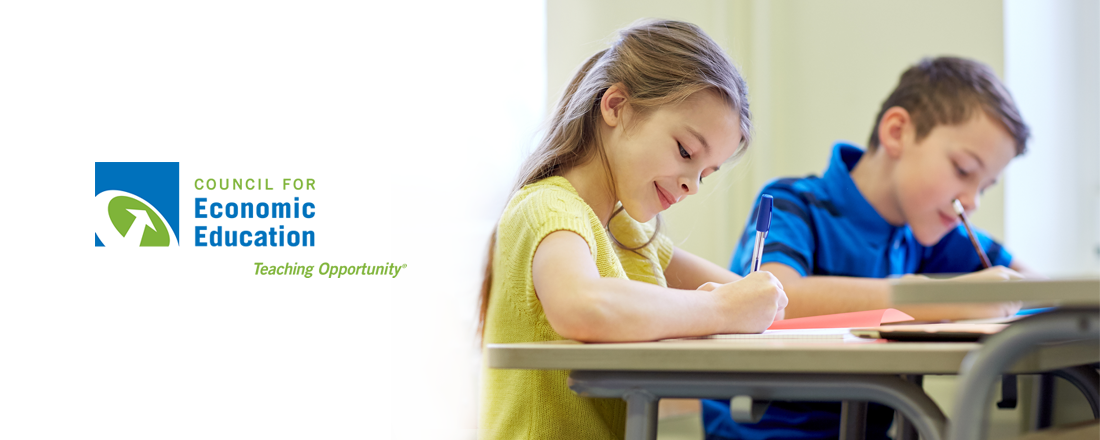
Among all the subjects that are taught in U.S. elementary schools, personal finance is often overlooked. That trend started way back in the 1940s, when U.S. government officials determined that schools and teachers were poorly equipped to deal with the complexities of the post-war economic boom. One organization came together to face that challenge and change the way the U.S. views financial literacy from an educational perspective.
Since 1949, the Council for Economic Education (CEE) has been training both students and educators in economics and financial literacy in the U.S. The team at RewardExpert spoke with Nan Morrison, CEO of CEE, to learn more about the mission of the organization and how they are helping to create a more financially literate nation.
Initiatives of the Council for Economic Education

The CEE advocates for higher standards in financial literacy through various educational programs and tools. This can be a difficult structure to implement because each state sets their own educational standards and requirements.
That means those requirements can vary vastly from state to state. For example, high school students in one state may not be required to take a personal finance course prior to graduation, but it may be a standard requirement in surrounding states.
There are many reasons schools don’t require financial education as a graduation requirement, explained Morrison. “Some think it requires a whole other time slot, whereas these subjects can be easily integrated into other subjects, like math and even English/Reading,” she added.
Regardless of the mismatch of standards across the nation, the CEE has dedicated itself as a leading non-profit organization to provide accessible educational programs for educators. The goal of the CEE is to reach K-12 students by providing educators with the necessary training and materials covering economics and personal finance.
Less than 20 percent of educators report feeling confident teaching personal finance to their students. This is resolved by providing curriculum tools and pedagogical support, as well as building an interlinked network of peers within the educational community.
The CEE educates over 55,000 K-12 teachers every year by way of in-person professional development training. In turn, those teachers effectively reach roughly 5 million students nationwide.
Over half of the educators represent schools that host low- and moderate-income students, who could potentially benefit from financial education provided free of charge. Reaching students before they begin to make personal finance decisions—such as taking out student loans, car loans or mortgages—is of pinnacle importance.
Survey Sheds Light on Financial Literacy in America

As part of CEE’s mission to highlight the importance of financial education, they’ve produced a survey every two years, the Survey of the States, which has since been developed into an interactive infographic website.
The Survey of the States keeps track of the growing economic issues that are faced by individuals in the U.S., such as the increasing load of student debt. It also provides a visualization of the educational trends of each state, listing the personal finance and economics educational requirements for K-12 institutions.
Some highlights of the most recent study include:
- Only 17 states require students to take a high school course in personal finance.
- Only five states require a stand-alone course in Personal Finance for high school graduation.
- More than one in six students in the U.S. don’t reach the baseline level of proficiency in financial literacy.
- Students from states where a financial education course was required were more likely to display positive financial behaviors and dispositions.
- More than half of Millennials report they are living paycheck to paycheck and unable to save for their future.
These studies suggest that the educational materials by the CEE are effective and the accessibility of the curriculum tools can help students who are struggling with building a positive financial future.
How You Can Help Further the Mission of the CEE

It’s impossible for the CEE to directly speak with every single educator and reach every single student in the nation. There are several ways parents, policymakers, businesses and organizations can help further their mission.
1. Businesses can help by supporting CEE and its affiliates in every state to continue to provide free resources and training for teachers across the country.
2. Teachers can assess their students’ economic and financial literacy using CEE’s Online Assessment Center.
3. Parents and students can help solve financial challenges through 16 missions in the free online game, Gen i Revolution. They can also form a team at their school to participate in the National Economic Challenge.
4. Policymakers can encourage their district or state to adopt comprehensive standards in economics and personal finance.
5. Additionally, there are several online educational tools that are free for anyone to access and use. EconEdLink is a free online tool that provides classroom-tested materials that have been proven to reach students effectively while encouraging and empowering educators. EconEdLink contains hundreds of easily searchable online lessons as well as free professional development videos for teachers.
Although planning for the future can be a daunting and scary task, providing educators with teaching resources can provide students with a firm foundation of financial literacy. It is incumbent on parents and educators who know about those resources and to encourage state governments to allocate appropriate funds to support the CEE. That will, in turn, help support the local educational system.
